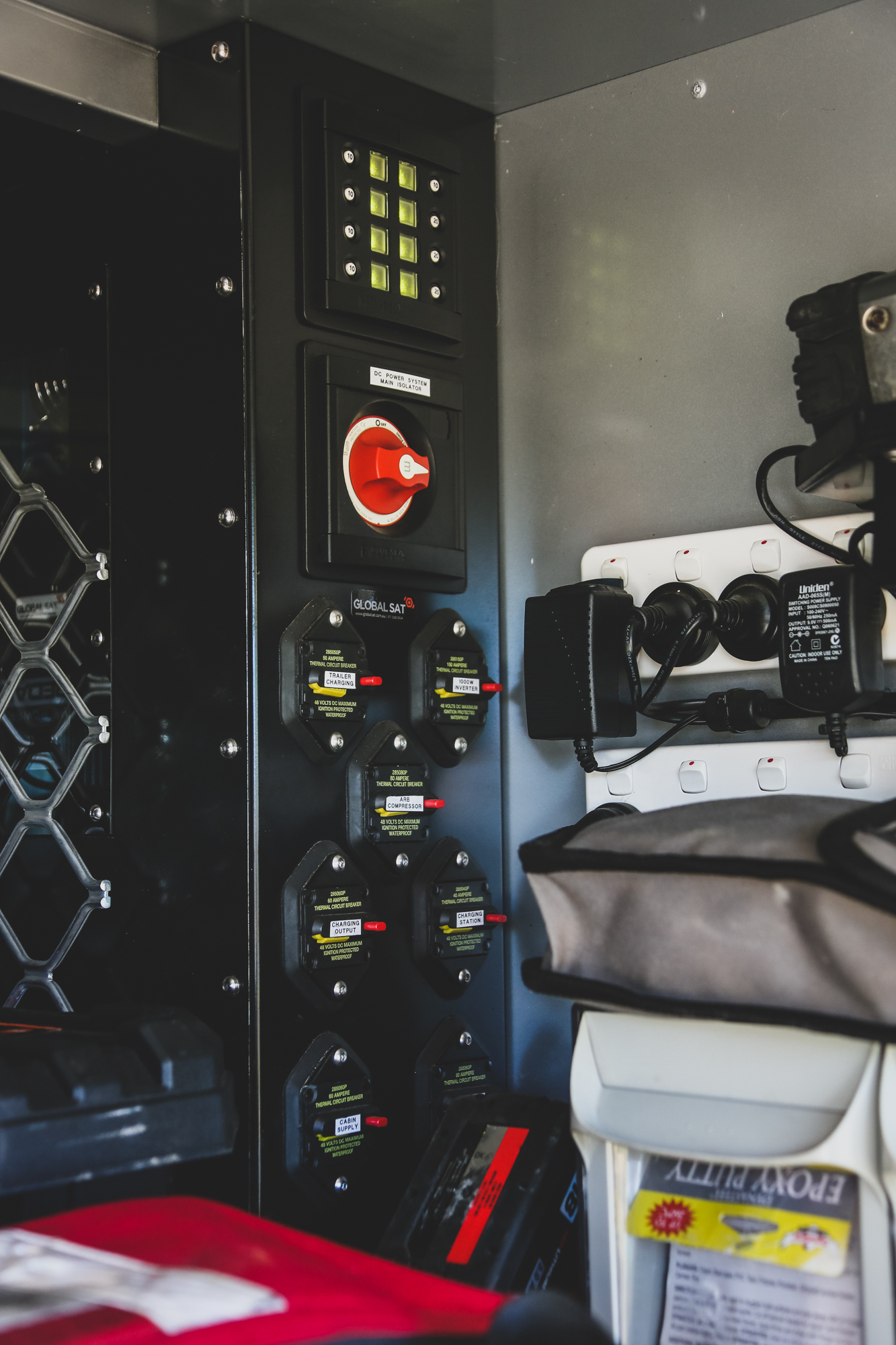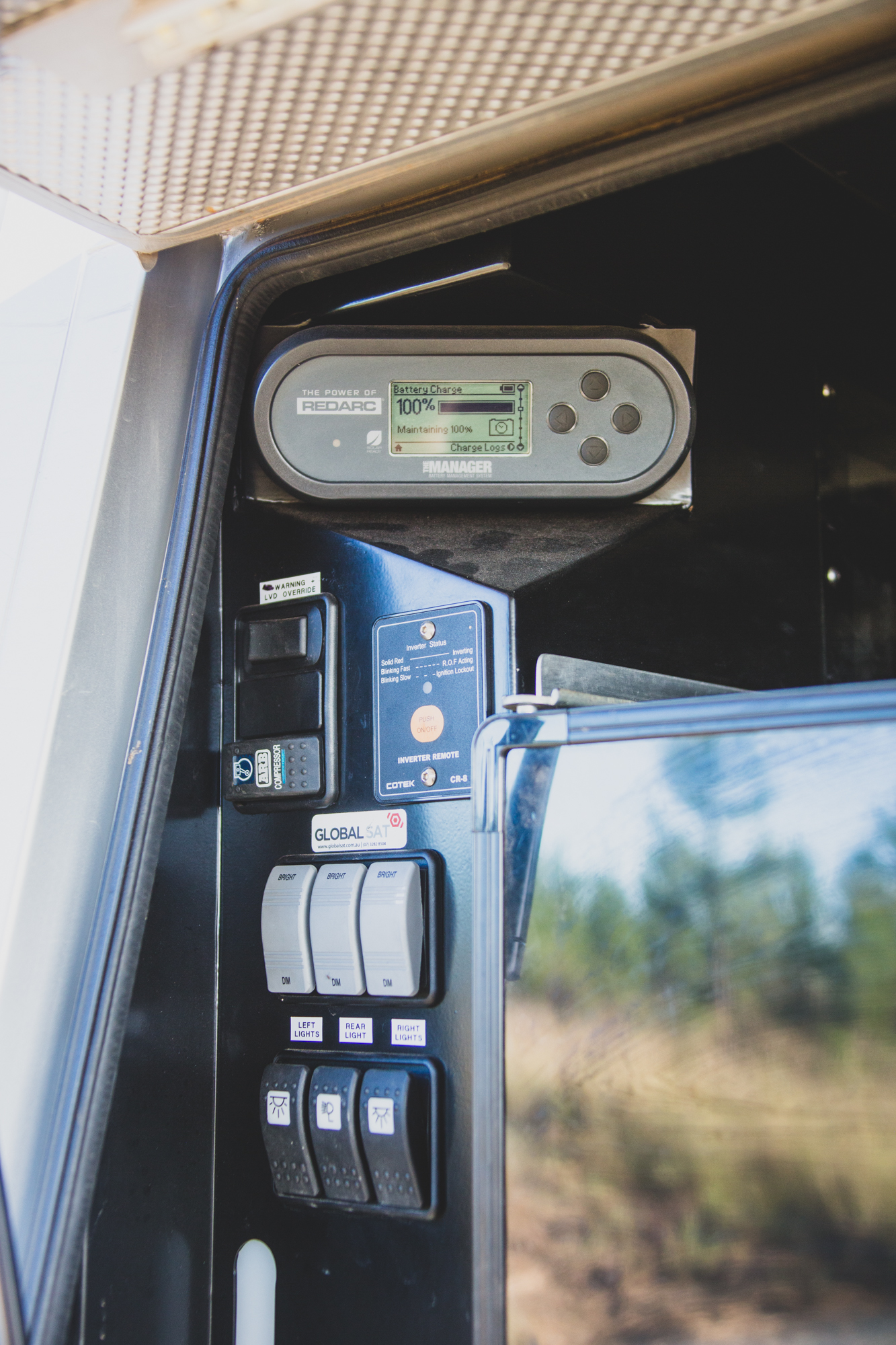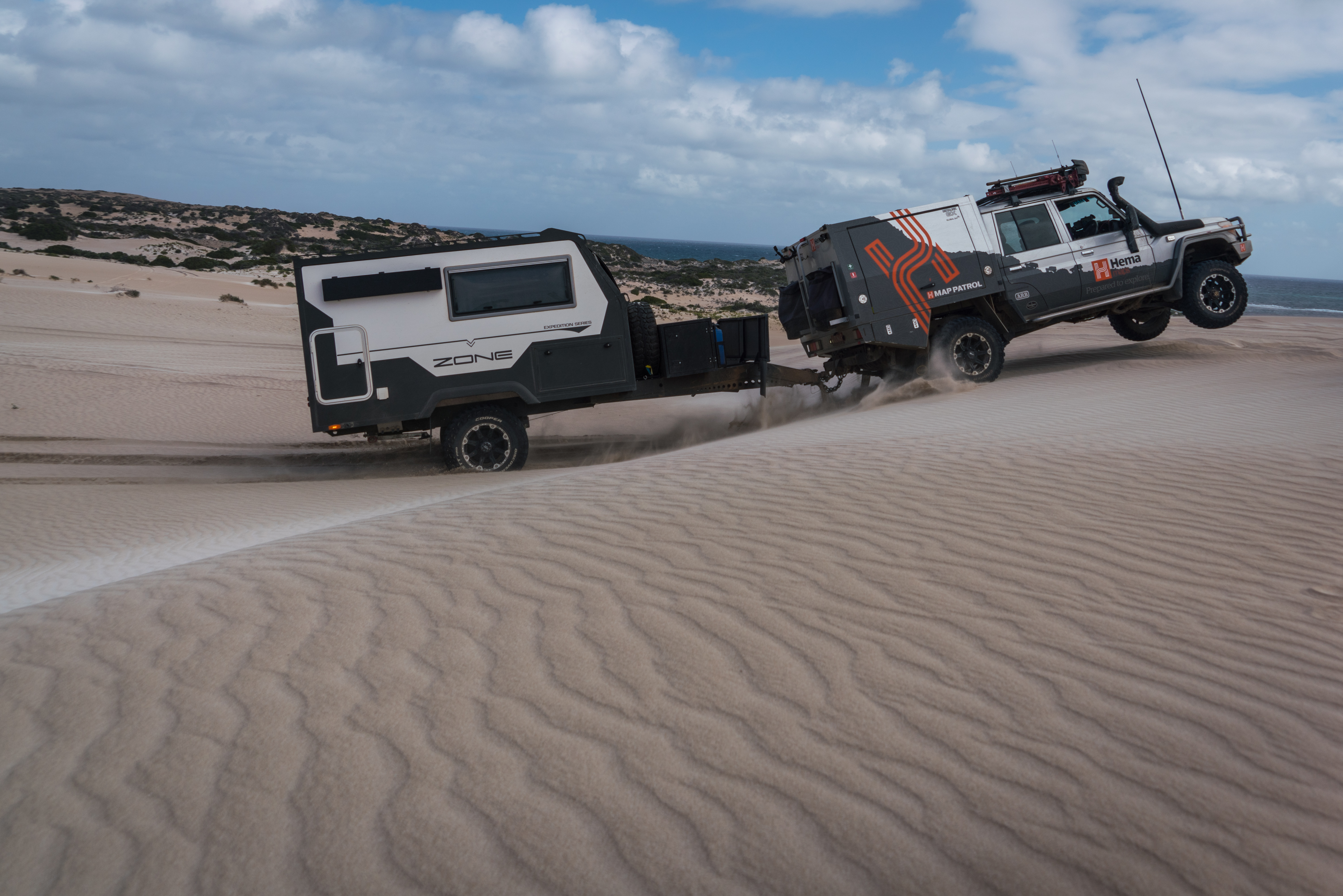The scenario is all too familiar, the anticipation of a long weekend of camping interrupted by the click, click, click of the starter and a truck filled with dead batteries because that one light was left on. Or the remote camp on the beach and days of sunshine and fun followed by a dead house battery and a warm fridge. Everyone suffers when the drinks get hot! The reality is that vehicles and camping systems are getting more and more complex and ever dependent on electronics and battery power.
Throughout the years, I have searched high and low for the most robust solutions that provide charging from solar, the alternator, and shore power (110-220vac). There are some products that do a few of those tasks well, but none that do it all, and with the provision for combining starting and house systems for winching or jumpstarting duties. I have tested traditional solenoid systems, MOSFET controllers, low-voltage disconnects, and even manual switches. Our needs for charging have changed, and products, for the most part, have not kept pace. In late 2017, I had the opportunity to drive a VDJ79 Land Cruiser from Brisbane up toward Cape York, spending days camping remotely and driving on those abusive Aussie backcountry roads. This Toyota was prepared for HEMA Maps to support their advanced ground-truthing GPS tracking, and it had the equivalent of a spaceship in the wiring department. All of the charging was managed with a new product from RedArc called the Manager30, and it just worked.


The Manager30, installed in the HEMA Map Patrol, a vehicle I have driven across Australia.
In the years since, the Manager30 has only been available in Australia, installed in applications like trailers and complex integrations like the Hema Map Patrol. However, in early 2019, RedArc decided to import the product to North America, configured for our applications, like 110 volt. Out of the box, it includes the main charge controller and a remote mountable battery monitor display. For most overland applications, it will also be appropriate to purchase the BMS Load Disconnect Isolator (SBI12-BLD) that will permit a remote operated joining of batteries for winching and self jumpstarting. Appropriately rated wiring (400amp @ 12v) and fusing will also need to be sourced.
Key Attributes
1. Isolates the starting battery from house loads
2. Permits shore charging of the house batteries from 110vac
3. Permits maximum power point tracking (MPPT) regulated solar charging of the house batteries
4. Charges the house batteries from the vehicle alternator (once the starting battery is charged)
5. User managed load disconnect
6. Works with lead acid, AGM, calcium, and lithium-ion phosphate batteries
7. LCD remote display show the status of all charging systems and batteries
Since that first trip, I have had the opportunity to test the Manager30 on a continental crossing Australia (including the Great Australian Bight), and in North America on a Patriot Campers trailer. The display is best learned with the manual close at hand to gain familiarity with all of the functions, but most are intuitive. Installation is not particularly difficult, but it should be undertaken by someone confident in 12v, 110v, and solar electrical systems, schematics, and general fusing and safety. I also found it notable that the system employs different charging profiles for touring mode (charging while driving) and storage mode (charging on 110v and solar) for when the system is not running, yet you still want to maintain the house battery. The best application for the Manager30 are in vehicles, campers, and trailers with multi-charging and battery maintenance needs, particularly those where solar and shore power charging are desired. There are few solutions where lithium batteries can be charged from so many sources, and the monitor prioritizes green power inputs like solar before the current is directed from 110v or vehicle DC. The unit can operate in temperatures from -40°F to +176°F, and the system is designed to handle high vibration vehicle applications—just what the overlander ordered. $1,193 | redarcelectronics.com
Manager30 (BMS1230S2-NA)
Output current, 30A
Input voltage range
AC 110-130V
AC 50-60Hz vehicle
DC 9-30V solar DC 9-30V
Output power, 520 watts
Operating temperature, -40°F to +176°F
Main unit dimensions, 17.5 x 7.3 x 3.1 inches
Remote monitor dimensions, 7.3 x 2.9 x 1.1 inches
Weight, 12.1 pounds
Warranty, two years
Pros
Charges from DC, solar, and shore power
Fully integrated solution with remote LCD controller
Works with multiple battery chemistries
Cons
Starting and house battery “jumping” requires an additional solenoid

Australia is really tough on gear. (The author was not driving.)


